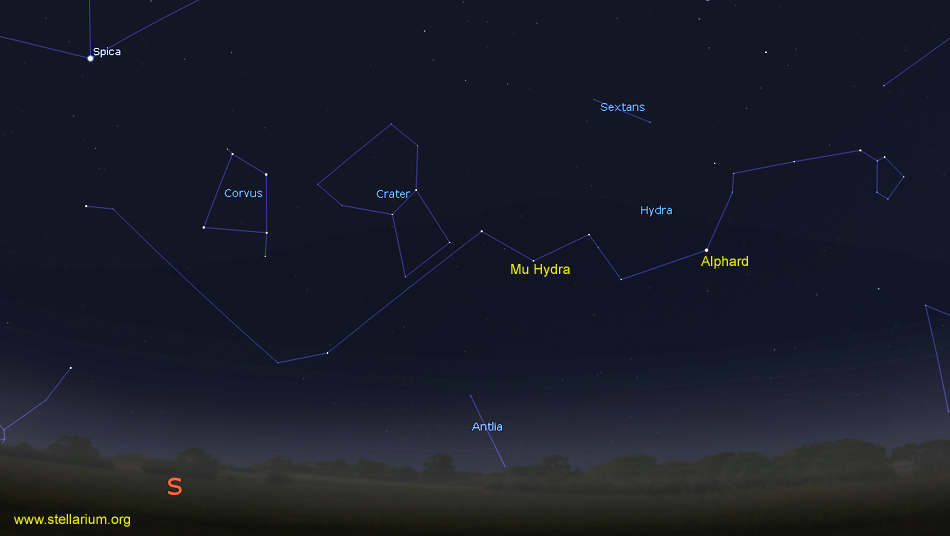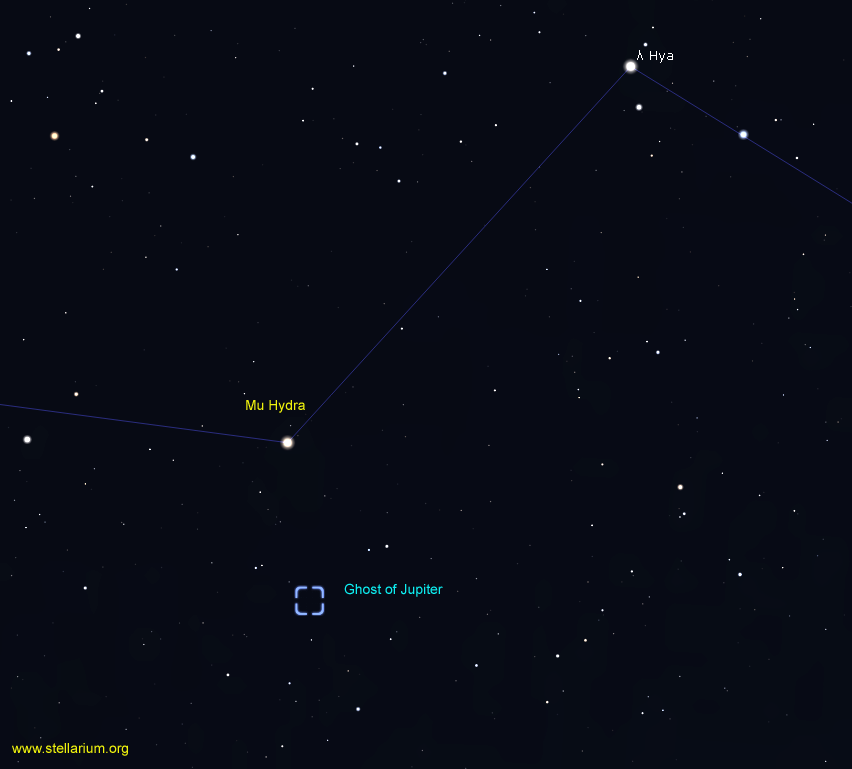Hydra
Hydra is the largest constellation in the night sky measuring 104 arc minutes in length and takes up 1,303 square degrees in area. This constellation is dotted with numerous galaxies, nebulae and star clusters.
Few bright stars brighter than magnitude 2.16 populate Hydra. The star Alphard translates from the Arabic meaning “the solitary one”. It is located 177 light-years from us and is pale orange in colour. If Alphard replaced our Sun, the star’s edge would reach halfway to the planet Mercury. Alphard is some 40 times larger than the Sun.

NGC 3242 known as the Ghost of Jupiter or Jupiter’s Ghost, is a fantastic 9th magnitude planetary nebula. It is the death remains with the stellar remnant white dwarf star visible at the centre. The bluish-green colour is evidence of oxygen or OIII from UV radiation of the central white dwarf star. Temperature estimated to be around 60,000 K.
A moderate-sized telescope will reveal its fuzzy shape but a larger instrument will catch its outer portion. When it appears on the meridian, NGC 3242 never gets higher than 26 degrees above the southern horizon as seen from southern Canada. The planetary is 3,600 light-years away and as the same size as Jupiter – hence the name. It is located less than two degrees south of the magnitude 3.8 star Mu Hydra.

The planet Venus rules the western skies and steadily climbs higher each night. On April 17, the 4.3% waxing crescent moon will be five degrees south and east of Venus. A week later on the 24th, it is close to the Pleiades Cluster thus making a great photo opportunity. Jupiter is up in the southeast after 11 p.m. local time on April 1 and at 9 p.m. by month’s end. Consult the RASC Observer’s Handbook 2018 for transits and shadows times of its Galilean moons.
Mars and Saturn rise some four hours after Jupiter at 3 a.m. with Mars moving past and away from Saturn as the month goes on. Over the next four weeks, the red planet continues to get closer to Earth and brightens from magnitude +0.45 to -0.18 by May 1. The third-quarter moon will be closest to these planets on the morning of April 7. Mercury has now shifted from evening to the morning sky and will be at its greatest western elongation of 27 degrees from the Sun on April 29th.
The Lyrid meteor shower will produce an estimated 20 meteors per hour when it peaks on the night of the 22nd. Previous showers have resulted in a surprising outburst of up to 100 meteors per hour but this is very difficult to predict. The first quarter moon will interfere for most of the night and sets before 3 a.m. locally.
April 21 is International Astronomy Day. Here is where RASC Centres and astronomy clubs set up displays in shopping malls, libraries and book store by day and host star parties at night (weather permitting). This is a fantastic way to engage with the public on the topic that we love.
The new moon occurs on April 15 with the full Pink Moon at 8:58 p.m. eastern time on the 29th.
Until next month, clear skies everyone.
Twitter: @astroeducator
